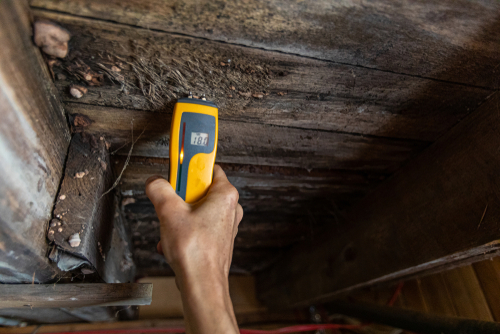Everyone’s talking about Australian real estate prices and where they’re heading. Many of our customers are telling us they’re still super busy with pre-purchase inspection reports as properties are snapped up across major cities and regional areas in all states and territories. We’ve even heard the market’s getting so frantic, some potential purchasers aren’t bothering with a pre-purchase inspection, for fear of being pipped to the post by another buyer.
A new report from ANZ Bank predicts house prices nationally will rise by 17% this year, before potentially slowing to 6% next year.
What does all this property activity mean for pest managers?
Customers are relying on pre-purchase inspection reports
If you’re performing more pre-purchase inspection reports than usual, it means more consumers are relying on your reports before buying in a hectic market. One where many are paying over the odds to secure their dream home or next investment.
At Rapid Solutions, a high proportion of our current claims are around pre-purchase inspections.
It’s the usual story. A few months to a year after purchasing a property, the new owners have taken possession and subsequently find issues with the property. That might be through the process of renovating or as a result of storm damage (and their claim is declined by their home and contents insurer), for example. Or it may be when simply taking a closer look at their home now they have the keys and buying pressure is gone.
It’s an increasingly litigious society here in Australia. Consumers have easier access to the legal system, including “no win no fee” lawyers, and are often looking to pass blame to others. This is particularly true in situations where high rectification costs are involved.
Having handled many pre-purchase inspection claims, including those successfully defended and others where settlements were necessitated, Rapid Solutions has some insights to share.
There are some consistent shortcomings that, if addressed at the time of the inspection, can save the stress of having a claim brought against you.
Include photos in your pre-purchase inspection reports
A picture tells a thousand words. Inspection reports that include photographs of key site areas, whether to illustrate issues or not, provide a valuable snapshot in time of the property condition. The photographs included in your report should provide evidence to the customer of your findings. Conducive conditions, existing termite damage, or roof trusses in satisfactory condition should all be photographed, for example. Labelling your photos clearly – with the location and area – can also help the customer easily interpret your findings.
It’s a good idea to take as many photos as you can. Photograph all areas you are inspecting, ensuring they’re easily identifiable later. Close up photographs of walls or sub floor areas can be difficult to recall months or even several years later. So, zooming out to see the broader site area is useful for jogging your memory down the track. It also helps in providing further evidence as to the condition of the property at the time of the visual inspection.
You don’t have to provide all the photos to your customer, only the ones that alert them to the condition of the property.
Include recommendations in the pre-purchase inspection report
Experience tells us generic recommendations for invasive inspections or termite treatments won’t mount a successful defence in a claim. Making specific recommendations for the customer to act on, including a relevant timeframe, paints a better picture of the severity of the issues you have found or are warning about.
Recommendations to seek advice from other relevant trades are always valuable. The more specific about the reason why, the risk, and the timeframe, the better informed your customer will be.
Your recommendations should also be consistent with the potential risk to the property. Where there are conducive conditions, a recommendation for inspection 12 months later or longer may be called into question.
Be consistent
We often see reports that state no conducive conditions. However, elsewhere in the report the property is rated as at high risk of termite infestation.
Ensuring your findings, recommendations and ratings line up throughout your report, including your summary, is vital. It not only better informs your customer, it may assist in the defence of a claim. You can clearly demonstrate you’ve consistently tried to draw your customer’s attention to recommendations you’ve made.
If in your professional opinion a property is at medium or high risk of termite attack, that should be reflected throughout your entire report. This helps alert your customer to the need for them to take action before purchasing the property.

Communicate
In most claims we see, the purchaser receives the pre-purchase inspection report and makes no further enquiry of the inspector. Even if there is a high risk of termite damage or infestation.
True, the onus is on the purchaser to make these enquiries of the inspector. However, making a simple follow up call or email to highlight the main points of the pre-purchase inspection report might just make the difference at claim time.
If you’ve had another opportunity to reinforce the risks facing the purchaser, and this is documented, then great. You’ve likely given yourself an additional layer of protection if termite damage or activity is found at a later date.
We see this as a golden opportunity, particularly if there’s a termite management system in place. Be sure to reinforce to your customer that it’s a good idea to find out more from the vendor about the reasons for, and maintenance of, the system. This can provide valuable information about property’s risk of termites, in addition to what your report tells them.
Don’t ignore pre-purchase inspection complaints
Finally, if you do receive a complaint or potential claim from your customer after providing an inspection report, engage early. Firstly, let your insurer know – it’s a condition of your policy. Responding to your customer in a timely manner, without admitting liability, will serve you well. It’s better than sticking your head in the sand and hoping it will go away!
If you’ve received a Statement of Claim, or a lawyer’s demand letter, it’s a good idea to share that with your insurer. This way, you get their professional expertise as soon as possible. Often, once your customer feels you’re willing to resolve the matter, the claims process can run a lot more smoothly. Even if you’re not liable.
We’ve seen many claims where our policyholder has tried to manage a complaint themselves. They might offer to refund money, complete minor repairs, or attend a site meeting. Unfortunately, they’re often later accused of admitting liability via these good faith actions.
Rapid Inspect
Creating a quality pest and building report can be a time-consuming process. But getting it right the first time helps to protect you against claims in the future. Why not download Rapid Inspect?
It’s our free app that allows you to create comprehensive reports that are compliant with Australian Standards. Find out more about Rapid Inspect, or download it for Apple and Android.
And if you don’t have appropriate cover, find out more about our professional indemnity insurance too.

